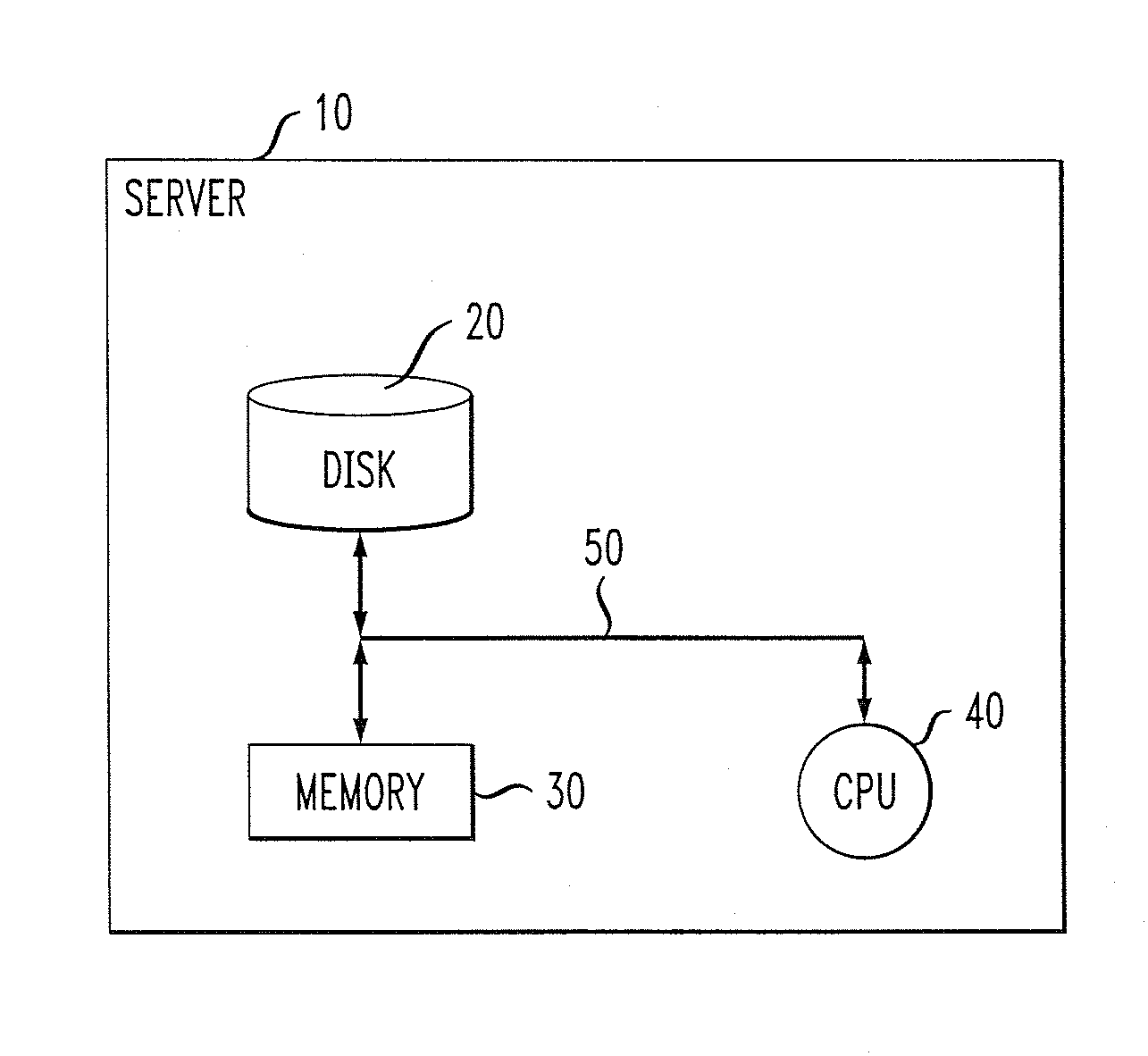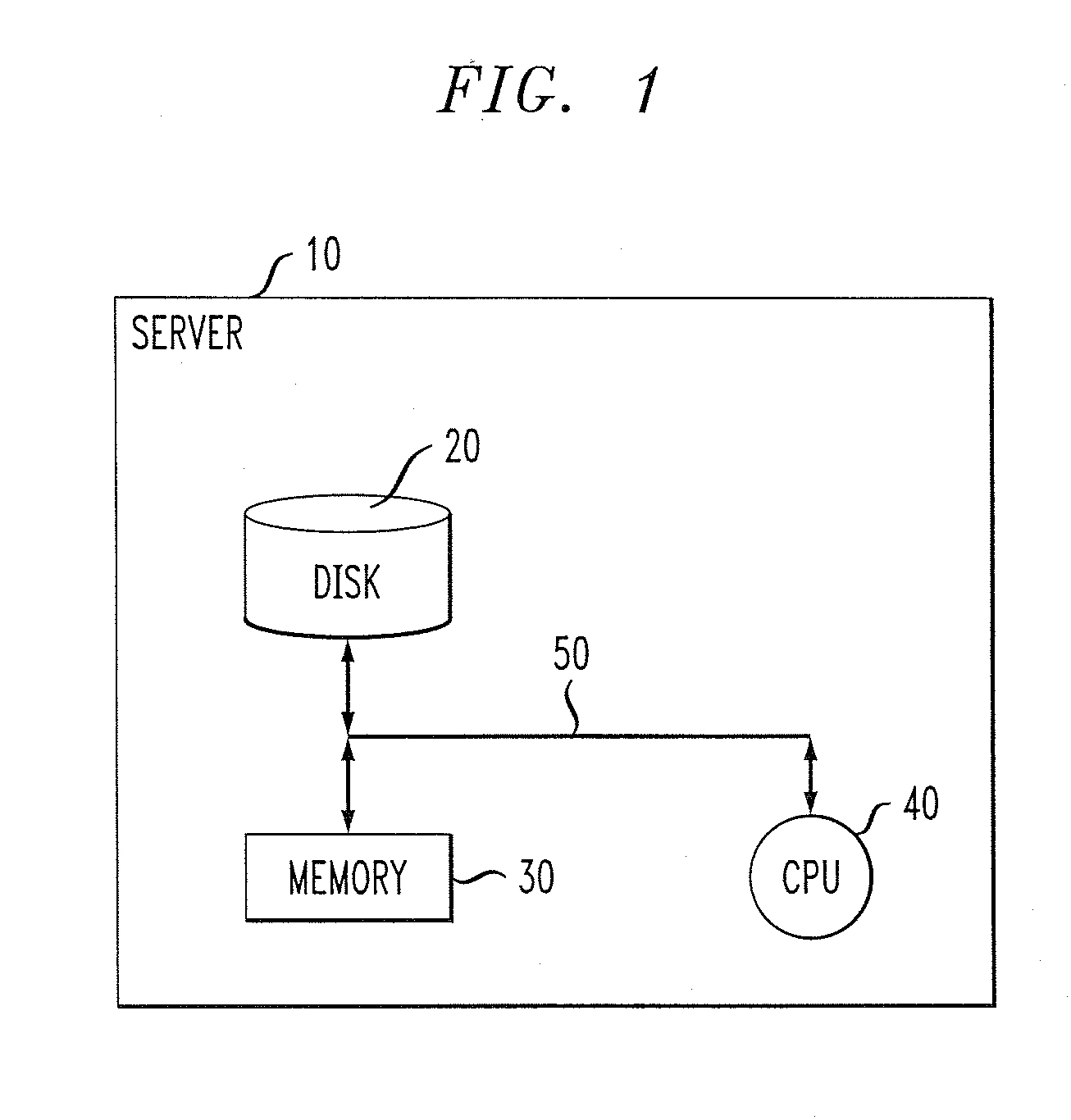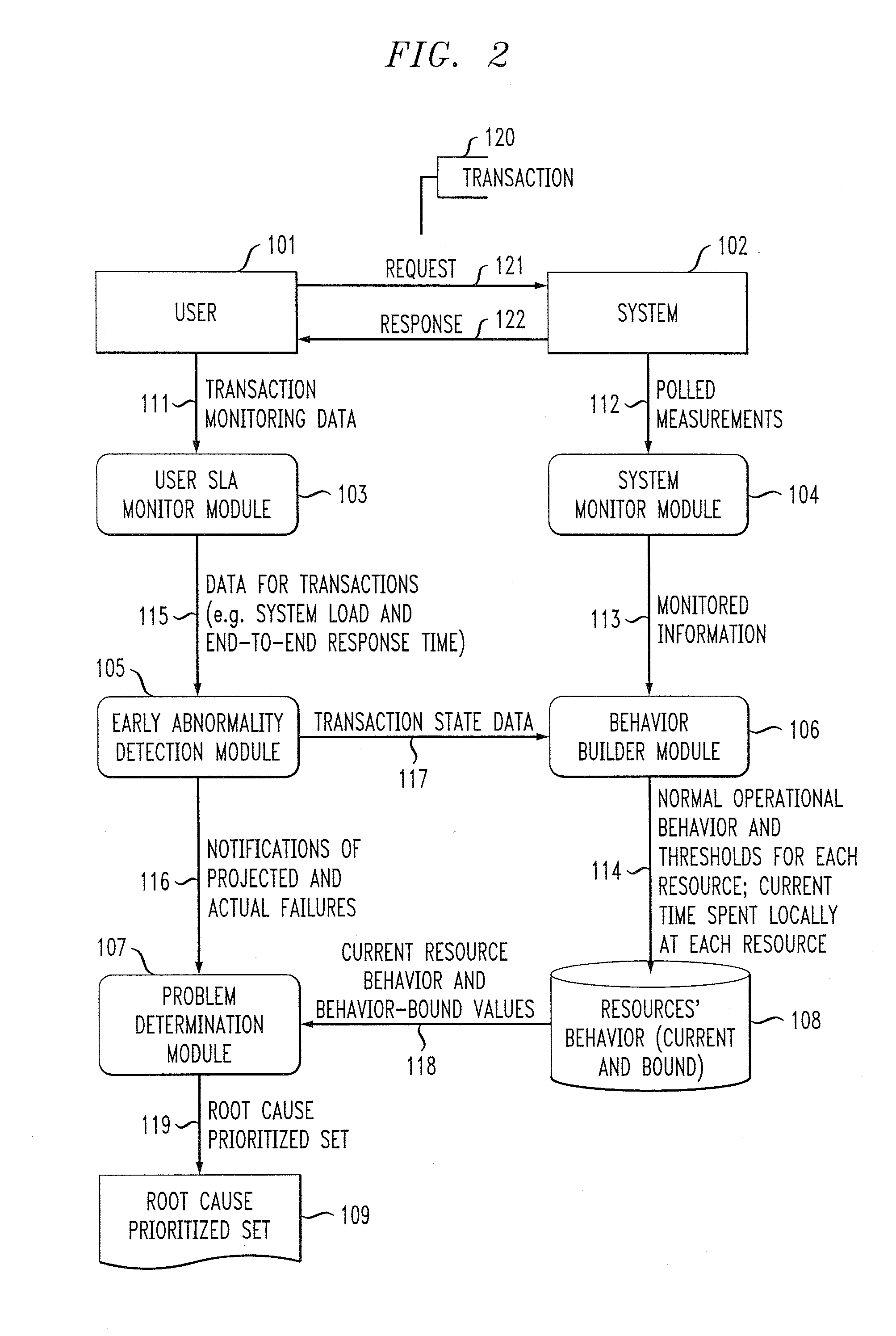Performance Degradation Root Cause Prediction in a Distributed Computing System
a distributed computing and root cause prediction technology, applied in computing, instruments, electric digital data processing, etc., can solve the problems of slos, affecting the efficiency of distributed information technology environment management, and affecting the stability of the system, so as to avoid inaccuracy in capacity planning, reduce computational complexity, and improve efficiency and effectiveness
- Summary
- Abstract
- Description
- Claims
- Application Information
AI Technical Summary
Benefits of technology
Problems solved by technology
Method used
Image
Examples
Embodiment Construction
[0015]The present invention will be described in the context of illustrative embodiments of an exemplary data processing system architecture. It should be understood, however, that the invention is not limited to use with any particular system architecture. Rather, the invention is more generally applicable to any distributed computing system in which it is desirable to perform efficient and effective performance degradation root cause prediction.
[0016]FIG. 1 is a block diagram depicting an exemplary hardware implementation suitable for employing one or more proactive performance degradation root cause prediction methodologies, according to an embodiment of the present invention. As shown in the figure, a server 10 preferably includes a disk 20, or alternative data storage means, memory 30 and a central processing unit (CPU) 40, or an alternative processor, operatively coupled together via a bus 50 or other connection arrangement.
[0017]It is to be appreciated that the term “processo...
PUM
 Login to View More
Login to View More Abstract
Description
Claims
Application Information
 Login to View More
Login to View More - R&D
- Intellectual Property
- Life Sciences
- Materials
- Tech Scout
- Unparalleled Data Quality
- Higher Quality Content
- 60% Fewer Hallucinations
Browse by: Latest US Patents, China's latest patents, Technical Efficacy Thesaurus, Application Domain, Technology Topic, Popular Technical Reports.
© 2025 PatSnap. All rights reserved.Legal|Privacy policy|Modern Slavery Act Transparency Statement|Sitemap|About US| Contact US: help@patsnap.com



